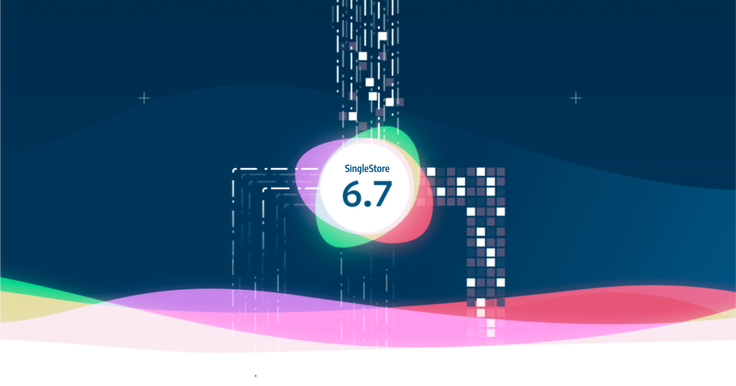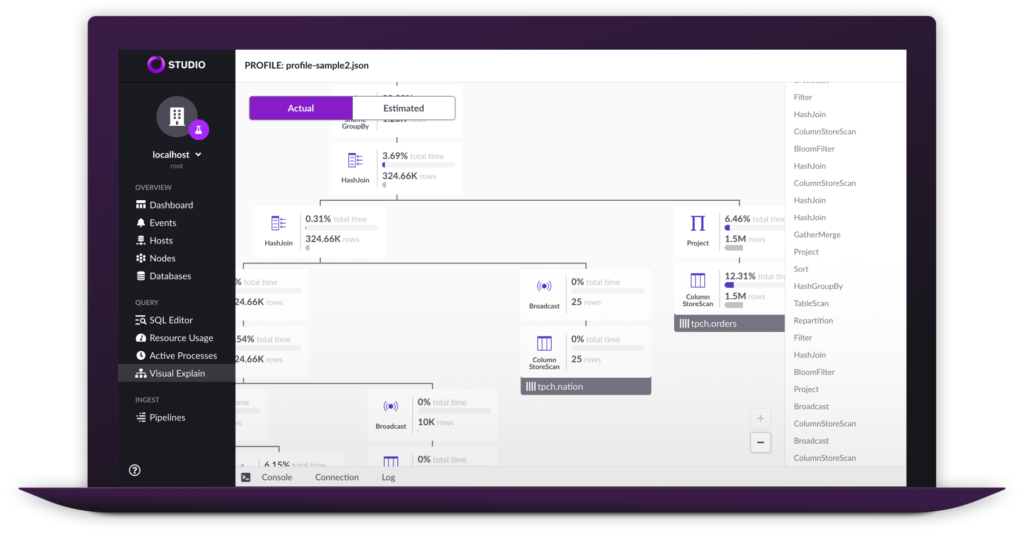
In this webinar, Eric Hanson, Principal Product Manager at SingleStore, describes the key features of SingleStoreDB Self-Managed 6.7, which is focused on usability, compatibility, and (as with every release) performance. View the webinar now, download the slides, or read all about it below.
Highlights of SingleStoreDB Self-Managed 6.7 include the new, and very popular free tier for SingleStore, which ZDNet describes as having “full functionality to support real-world use cases”. Also included in SingleStoreDB Self-Managed 6.7 are improved ease of use, faster queries, and new tools for monitoring and monitoring SingleStore.
The new release also includes an upgraded customer portal and a new, open developer forum to interact with SingleStore and your fellow developers. Users of the new free tier can access the forum as a form of community support, and can also freely access SingleStore documentation.
As Eric pointed out in the webinar, the new, free tier of SingleStore is proving very popular. And not only with organizations that are new to SingleStore – many organizations that are already customers are using the free tier for new projects, with plans to convert the instances to an enterprise license, with full SingleStore support, as each project moves into production.

A highlight of the webinar is a demo of SingleStore Studio, the new monitoring UI for SingleStore. SingleStore Studio is delivered as software as a service (SaaS) and will be updated regularly, every month or two, to add features and respond to customer feedback.
Every current or prospective SingleStore user should watch the webinar for the detailed SingleStore Studio demo. With Studio, and using the techniques shown in the demo, your ability to optimize your queries will skyrocket.

Webinar attendees asked many interesting questions, including the following.
Q: With the free tier, is the limit 128GB per cluster?\A: Yes. The limit is 128GB per cluster, which is aggregator and leaf nodes combined. Disk usage is unlimited. You’ll find informal support in our forum and you can take SingleStore training courses leading to certification.
Q: How hard is it to move from SingleStore Ops to SingleStore Studio?\A: It took Eric a couple of hours to learn to use the Ops tools for basics, and there are analogous commands in the new tools. The new toolset has tremendous benefits. SingleStore Ops is a distributed system that runs alongside SingleStore, and has its own failure modes. The new toolset is basically stateless and much more robust. It also has additional features that add a lot of power, including the ability to work easily with management tools like Ansible, Chef, and Puppet.
Q: Is SingleStore Ops going away?\A: Eventually, yes. From here forward, new engineering will go into the new toolset. But SingleStore Ops will be supported for at least a couple of years alongside the new toolset.
Q: Are there plans for range partitioning?\A: Range partitioning helps you manage extremely large data sets. We think we can address these needs in other ways, with the current product and in future releases. For instance, I was recently able to delete 100 million rows of a 300 million table in seconds; a similar operation on most relational databases takes hours.
Q: Is there any new information about cloud deployment?\A: There’s some really good new material in our documentation about how to deploy SingleStore and there’s a new AWS cloud formation template.
Q: How does the free tier for SingleStore compare to the free tier for SAP Hana?\A: The SAP Hana free tier is much more limited, in two different ways. The first is that the memory allotment is only 32GB for the SAP Hana free tier, vs. 128GB for SingleStore. But the really big difference is that SAP Hana puts the entire database in memory, whereas SingleStore only has aggregator nodes and rowstore tables in memory; columnstore tables live on disk, with a relatively small amount of RAM used for management. So if you use all rowstore tables in SingleStore, which is rare, you might have 100GB of data and the remaining 28GB or so for aggregator nodes. If you mix rowstore and columnstore tables, you might run four servers as nodes, with 32GB of RAM per server, and hundreds of gigabytes of data in the overall database. This is an order of magnitude more total data than the SAP Hana free tier.
Q: You’ve added support for SIMD instructions on Intel. How about AMD?\A: The newest AMD chips include compatibility with the SIMD instructions that we support on Intel, so you can get the benefit of the Intel SIMD instructions on both Intel and AMD.
Q: Is SingleStore Studio SaaS or on-prem?\A: You actually install SingleStore Studio on-premises, or on your own virtual machines in the cloud.
Q: Can you back up and restore SingleStore to AWS S3?\A: Yes, you can both back up and restore directly to S3.
Q: Is SingleStore more widely used on-premises, or in the cloud?\A: Both. About half of our customers are on-premises, and about half in the cloud.
Q: How easy is it to get my admins to be experts in SingleStore?\A: Because it’s a SQL database, it’s very similar to manage to the most popular databases out there, including Oracle, Microsoft SQL Server, IBM DB2, MySQL, MariaDB, PostgreSQL, Teradata, and Vertica, as well as many others. The new part will be learning how to manage the distributed aspects of the system, in particular aggregator and leaf nodes, rebalancing data, and a few other aspects. However, SingleStore helps customers with initial setup, and you may only need to adjust the system every few quarters or so.
View the recorded webinar for SingleStoreDB Self-Managed 6.7 and download the slides. For even more information on SingleStoreDB Self-Managed 6.7, see the press release and all eight blog posts on the new version: Product launch; managing and monitoring SingleStoreDB Self-Managed 6.7 (includes SingleStore Studio); the new free tier; performance improvements; the Areeba case study; the Wag! case study; the creation of the Visual Explain feature; and how we developed adaptive compression.





